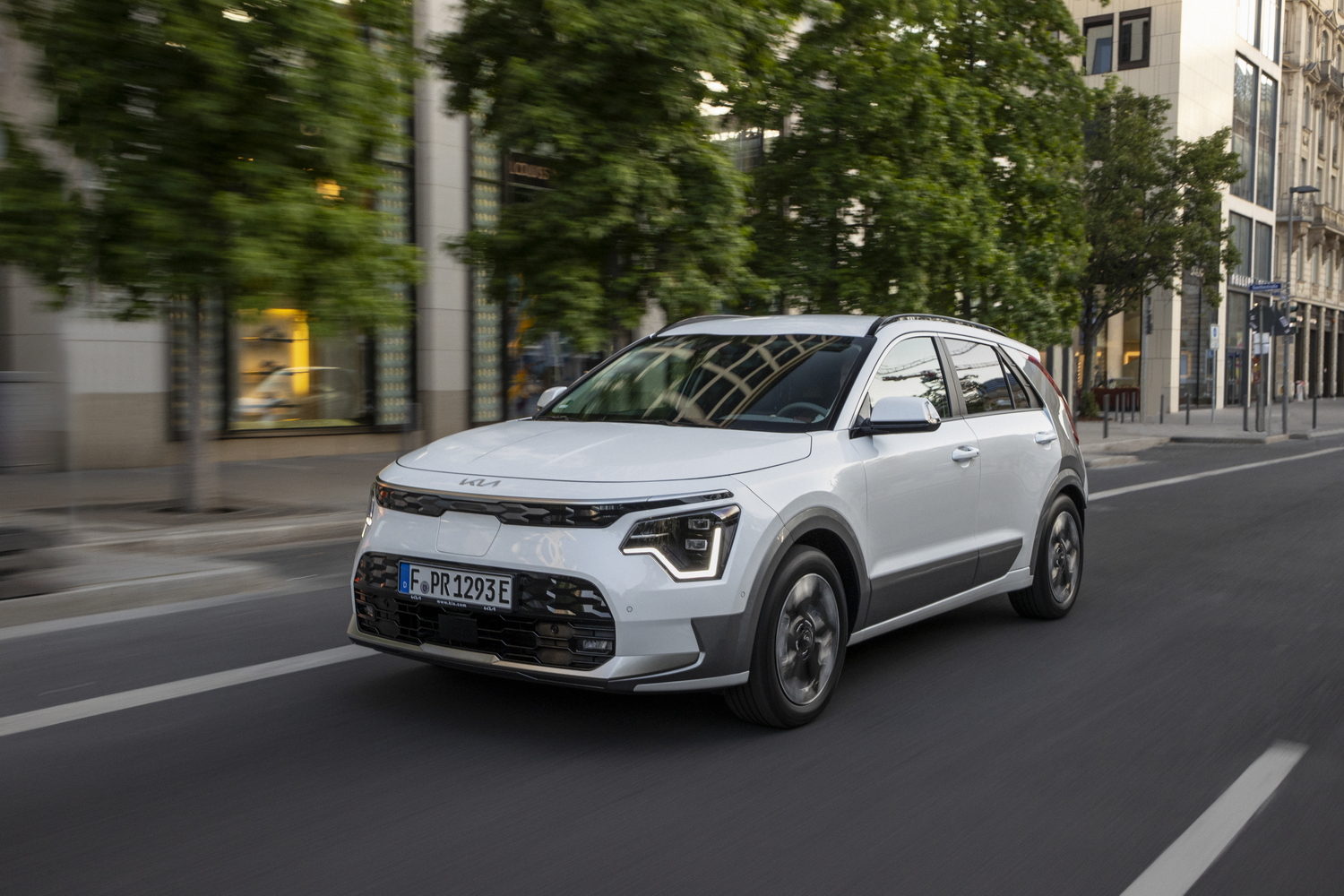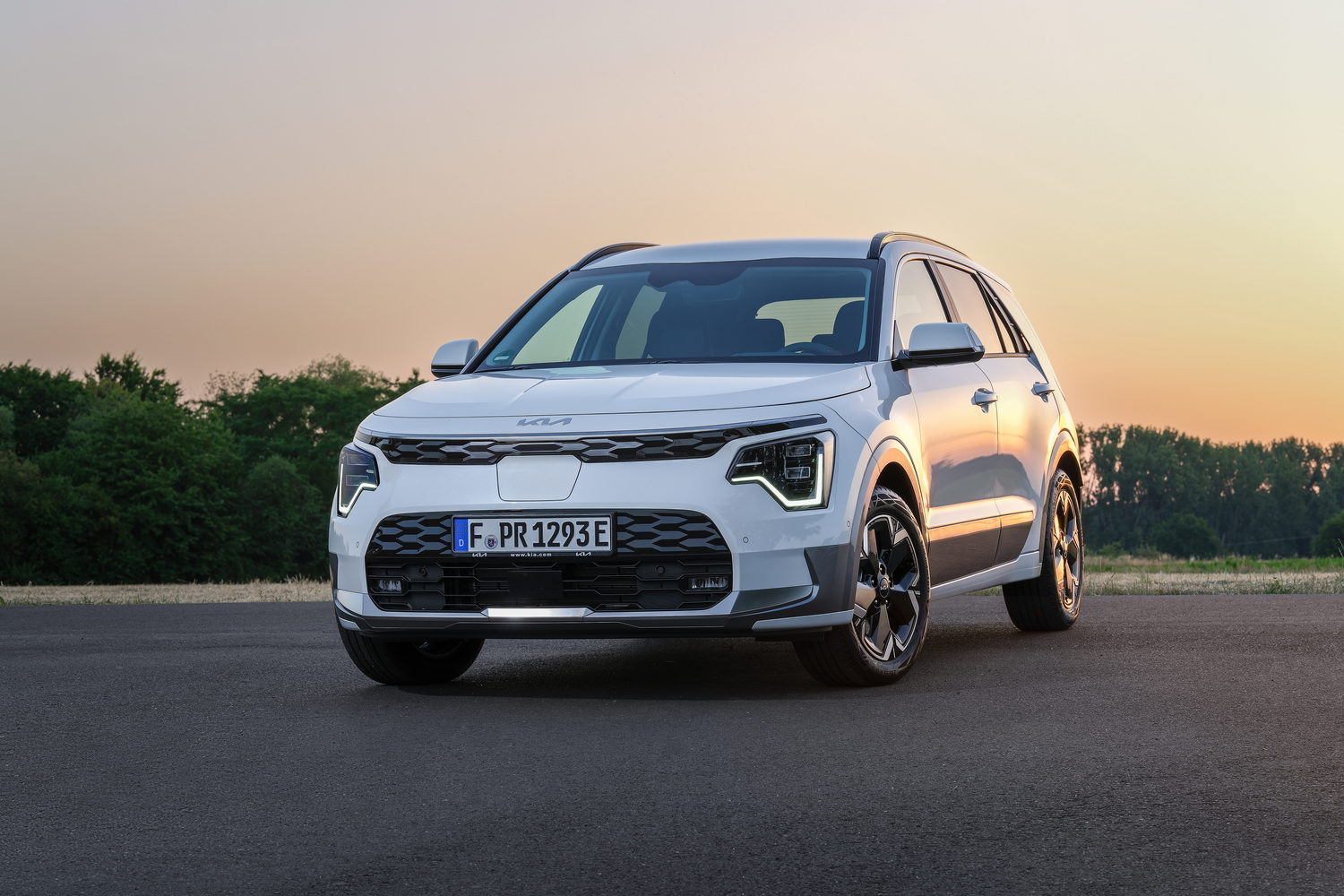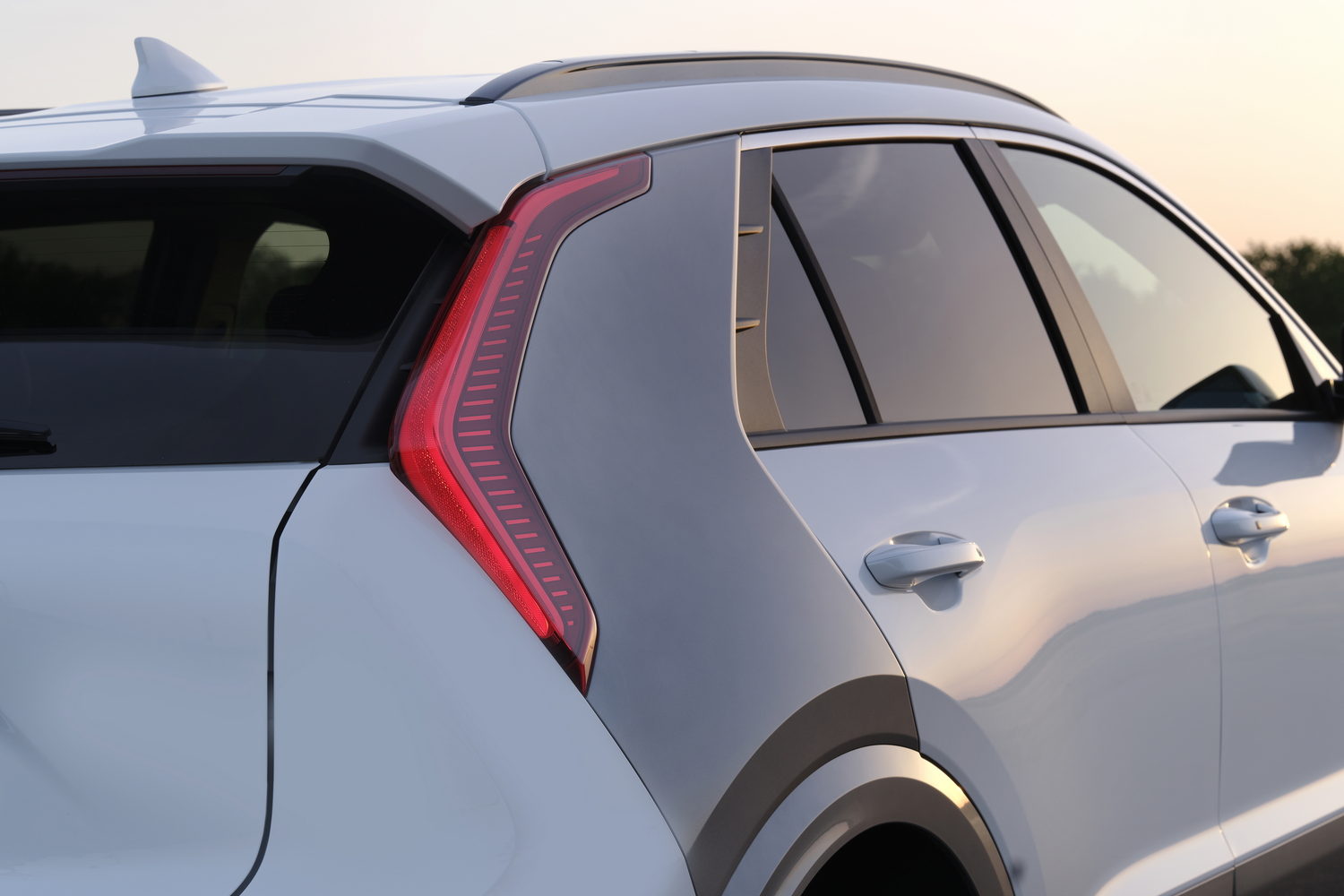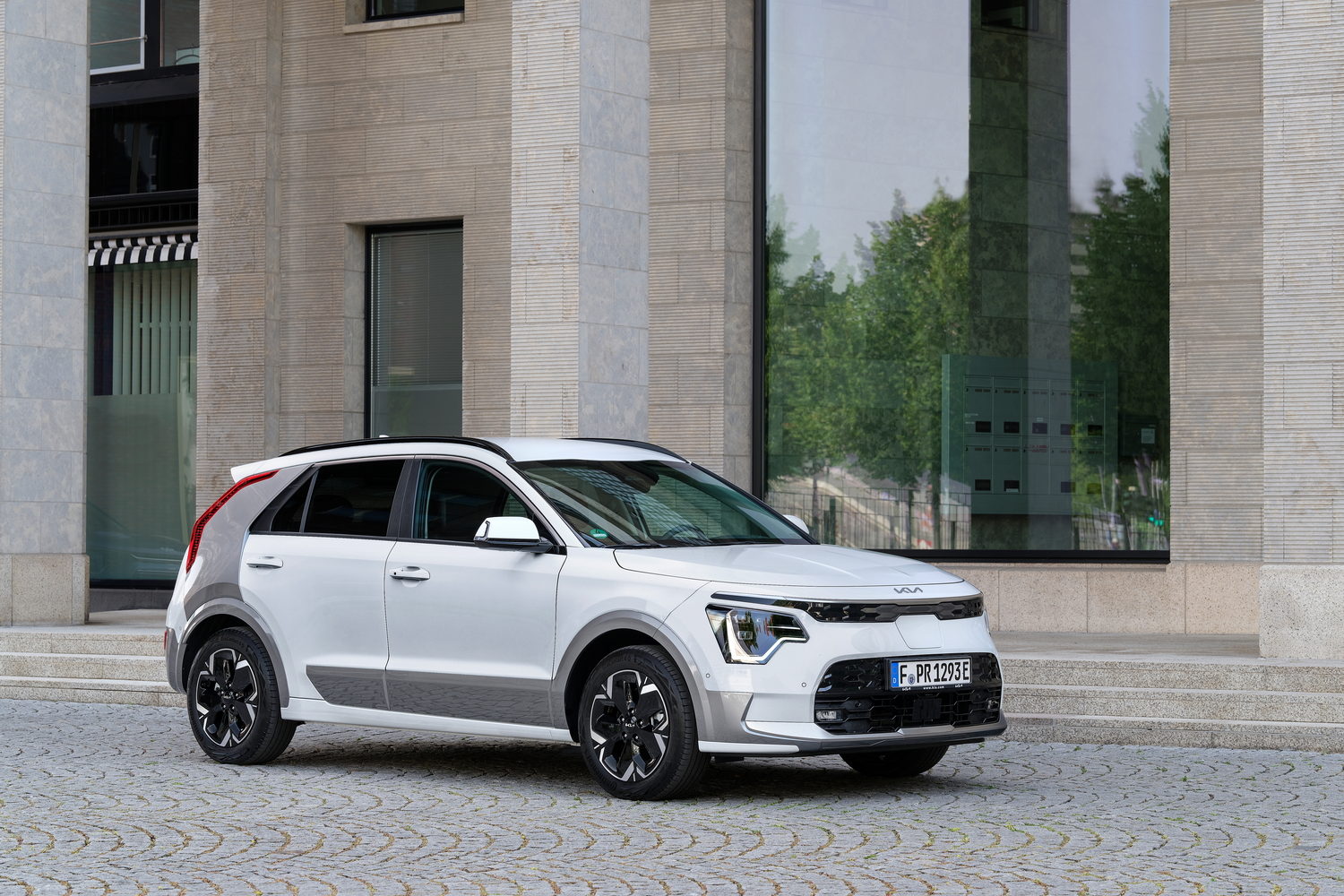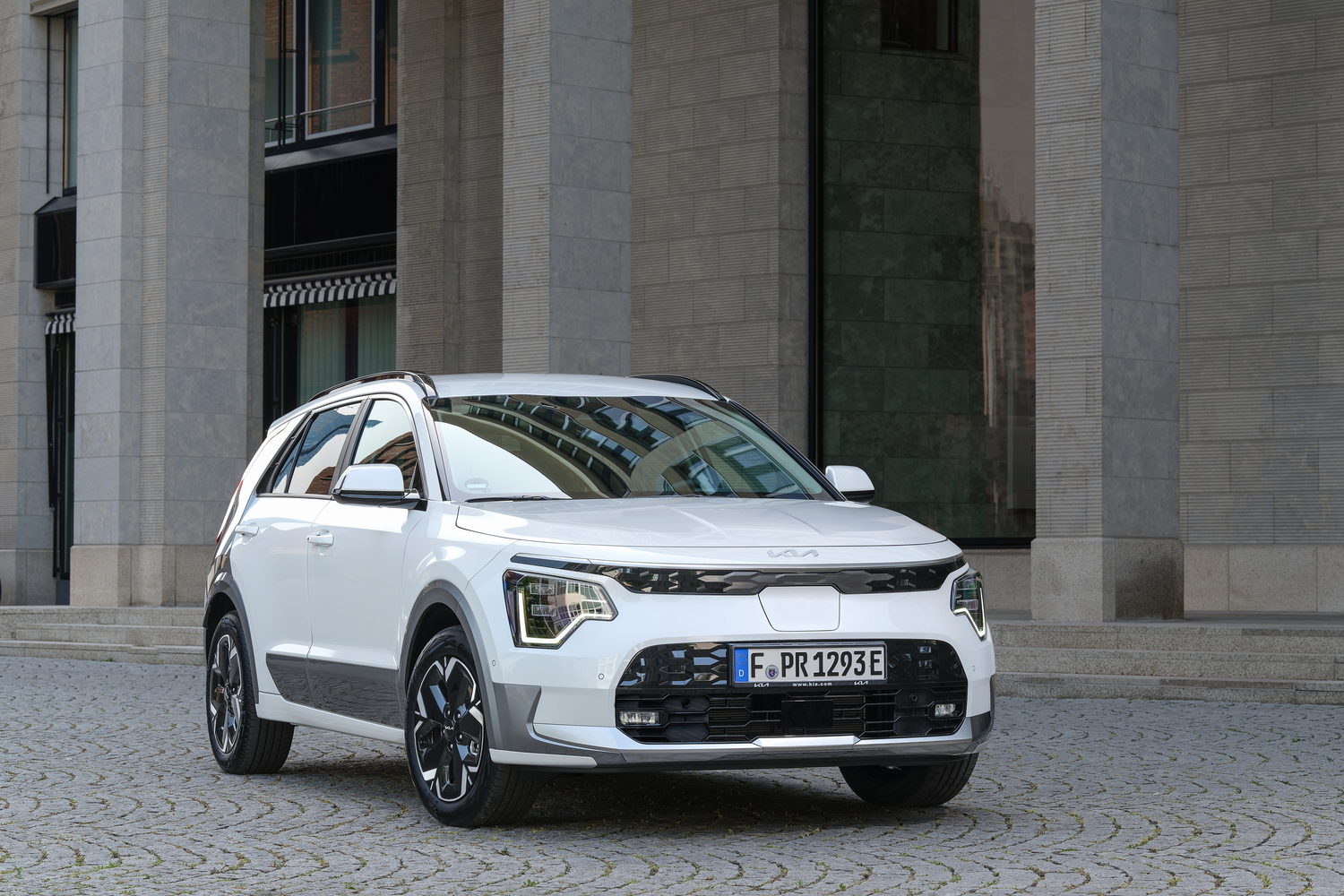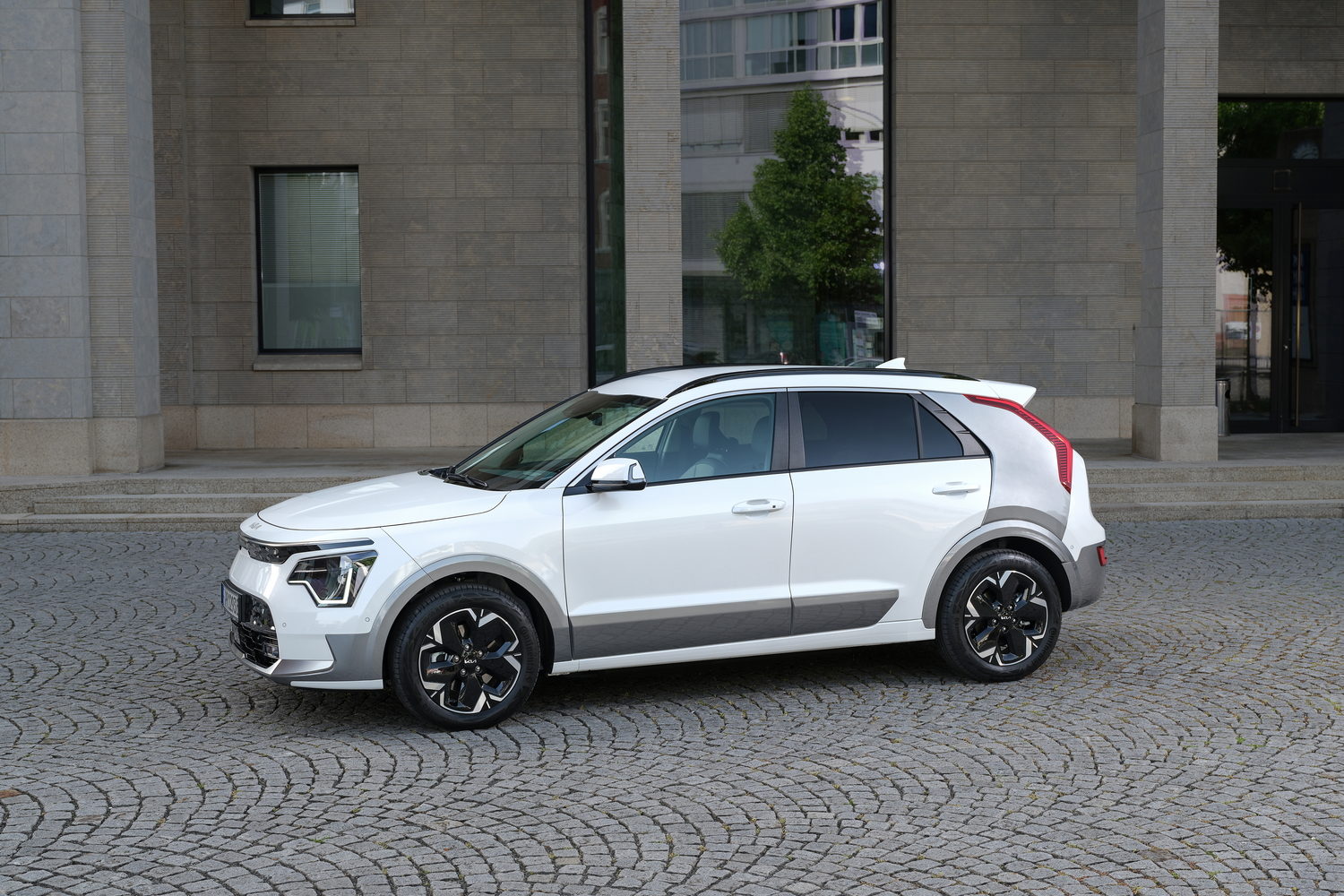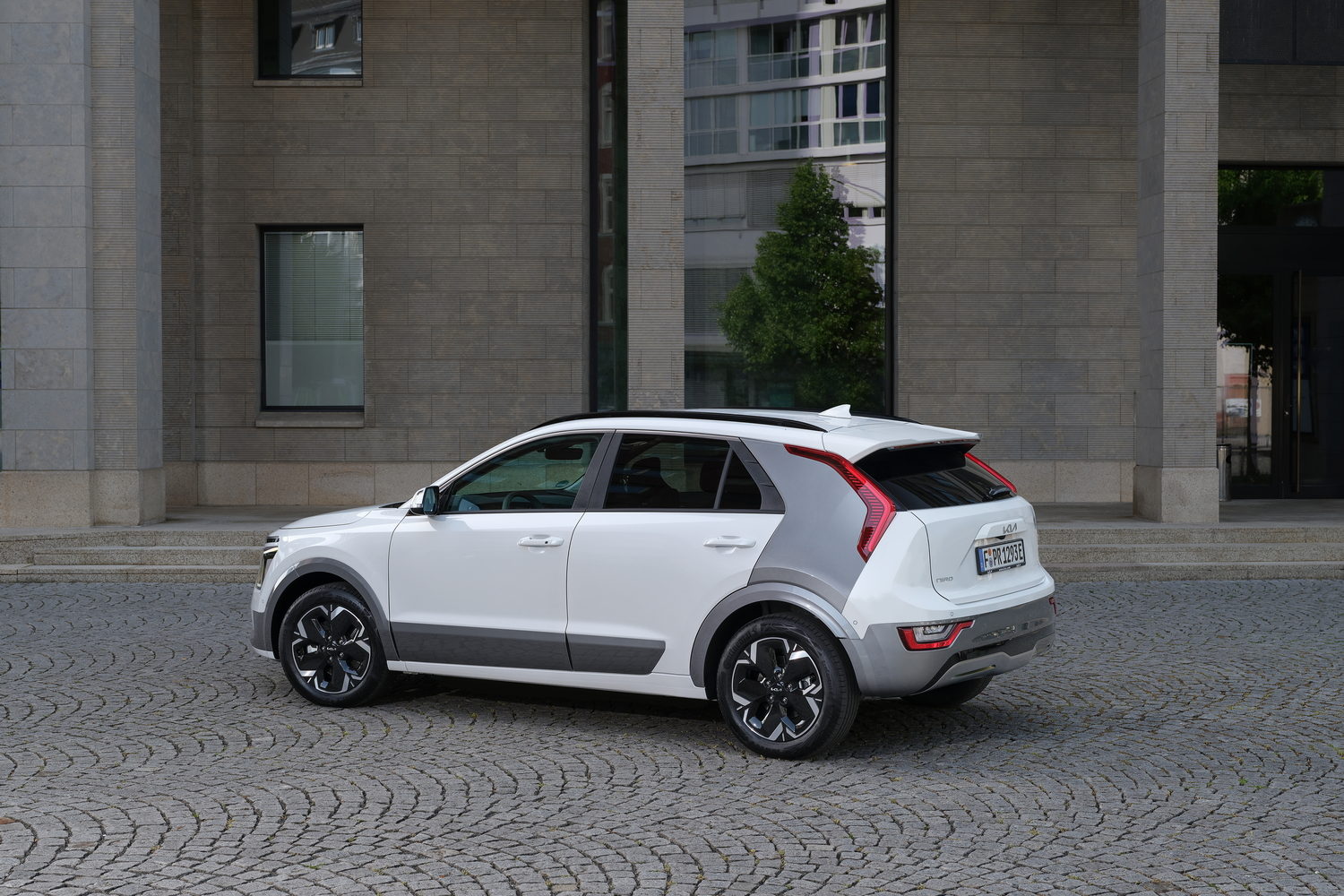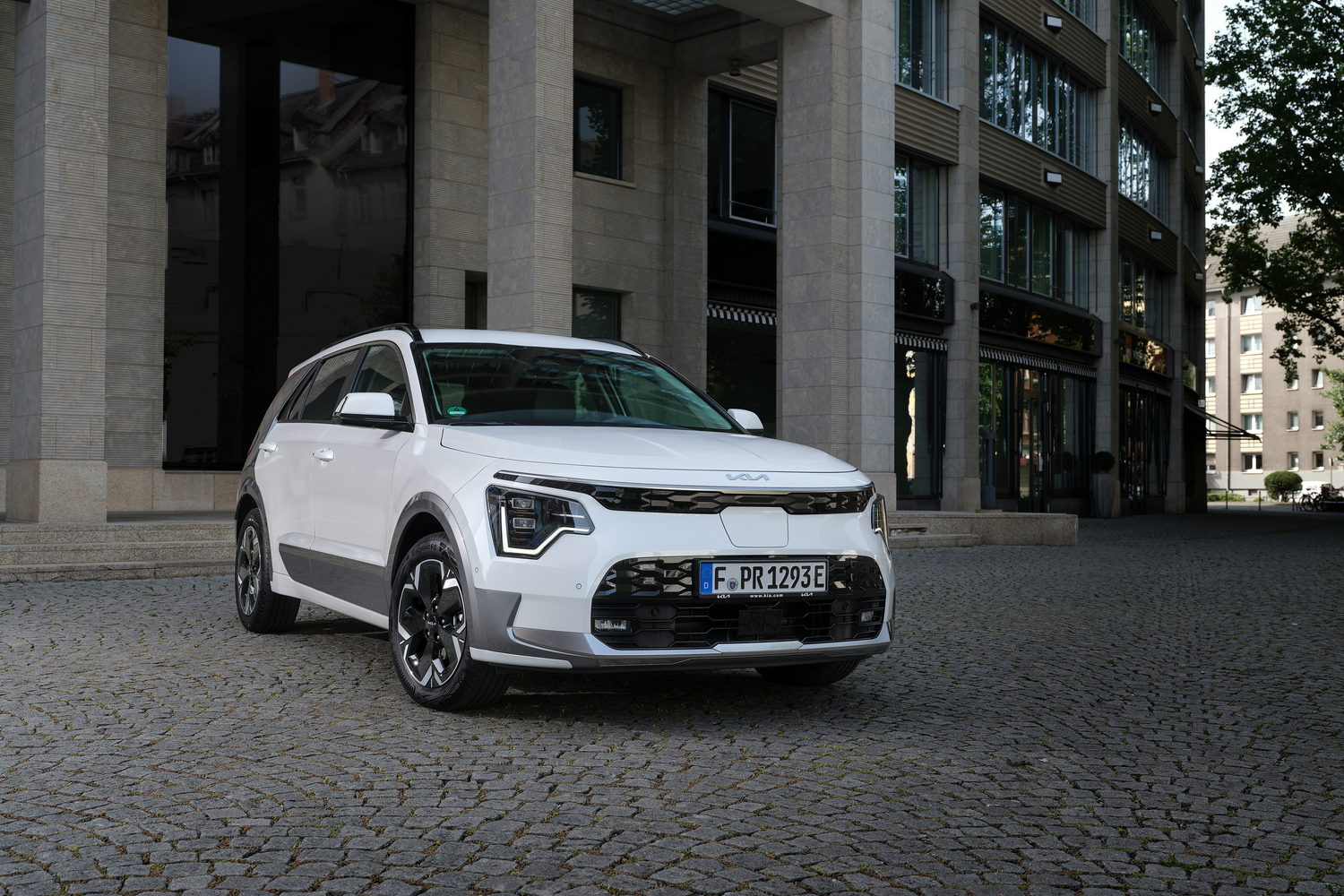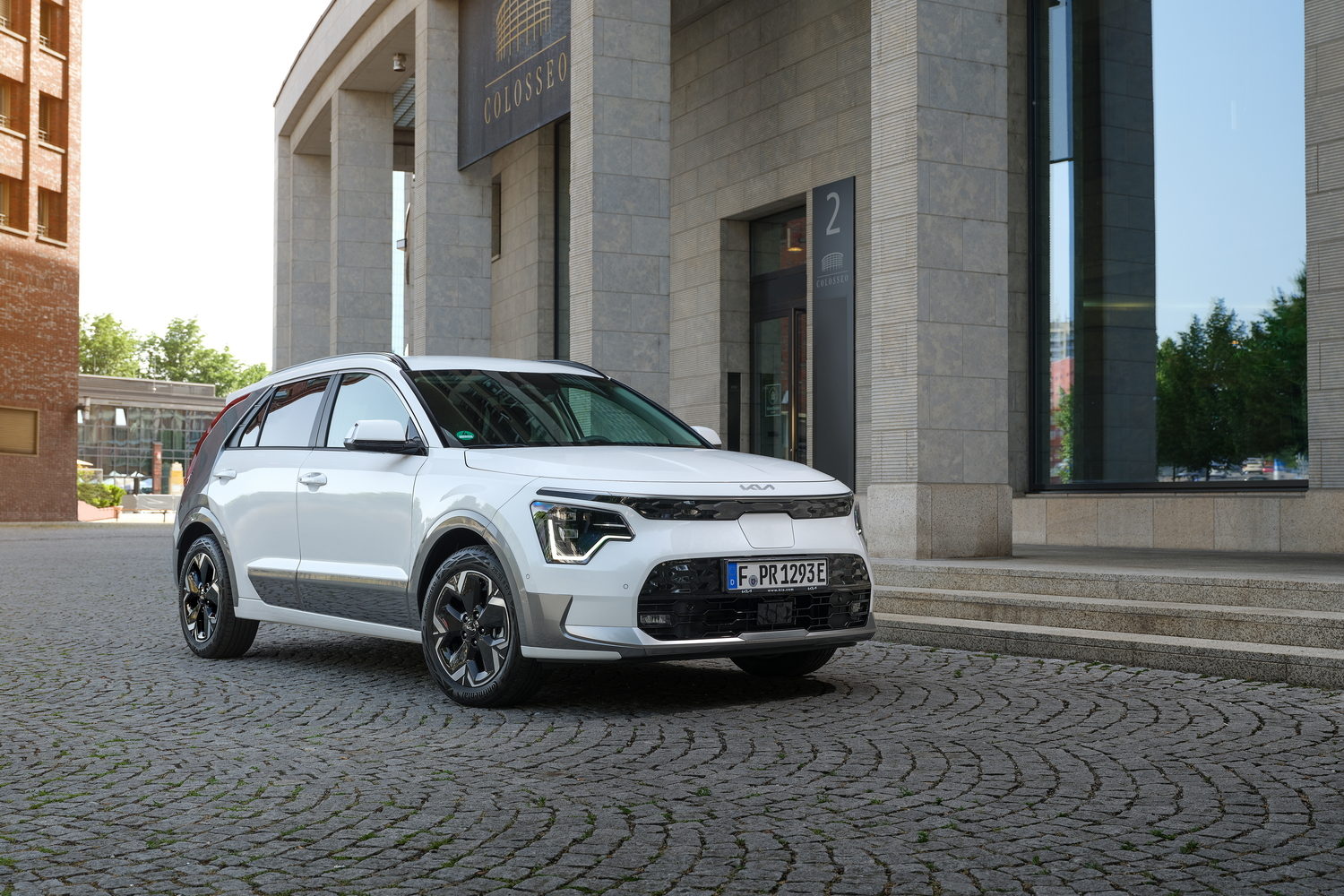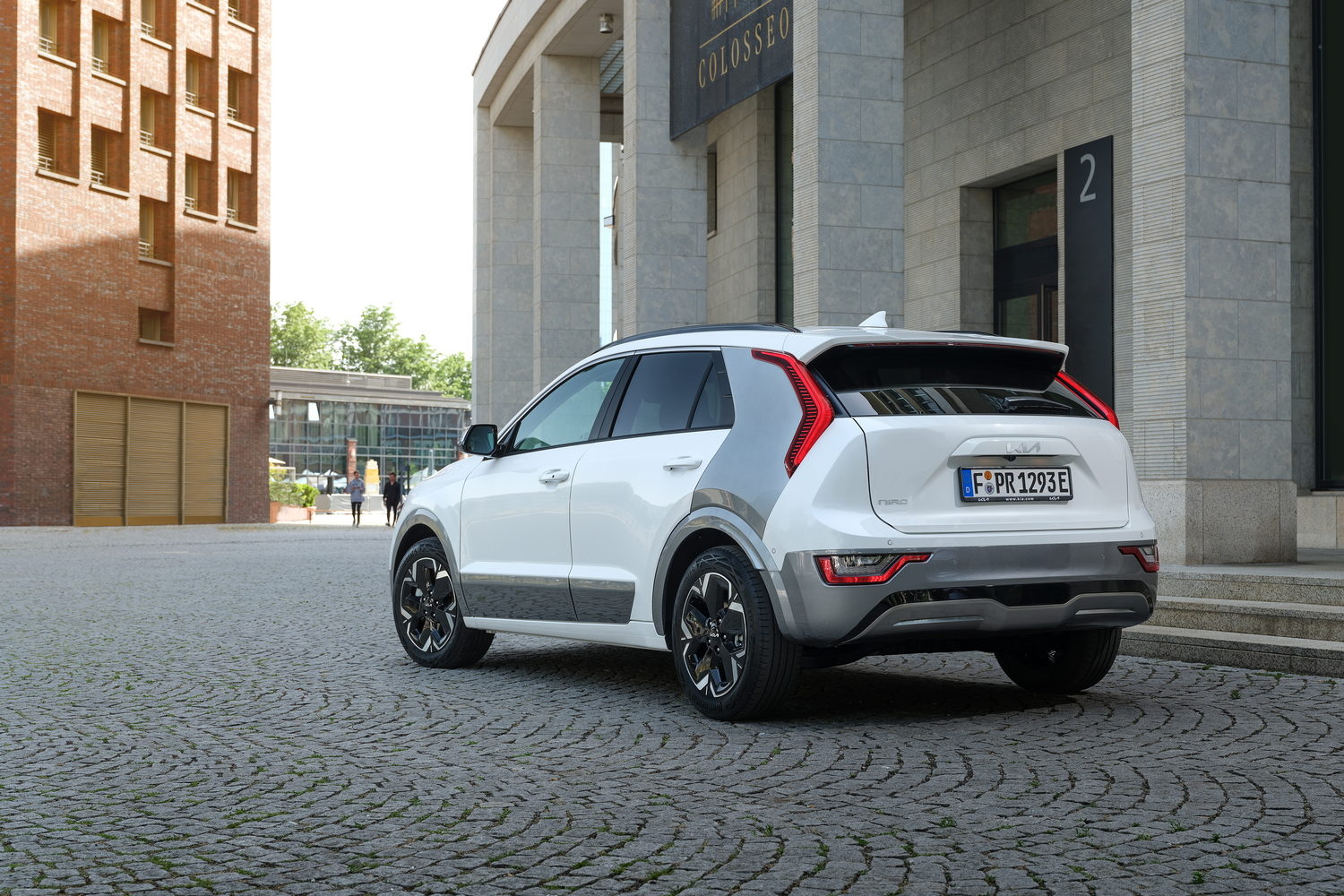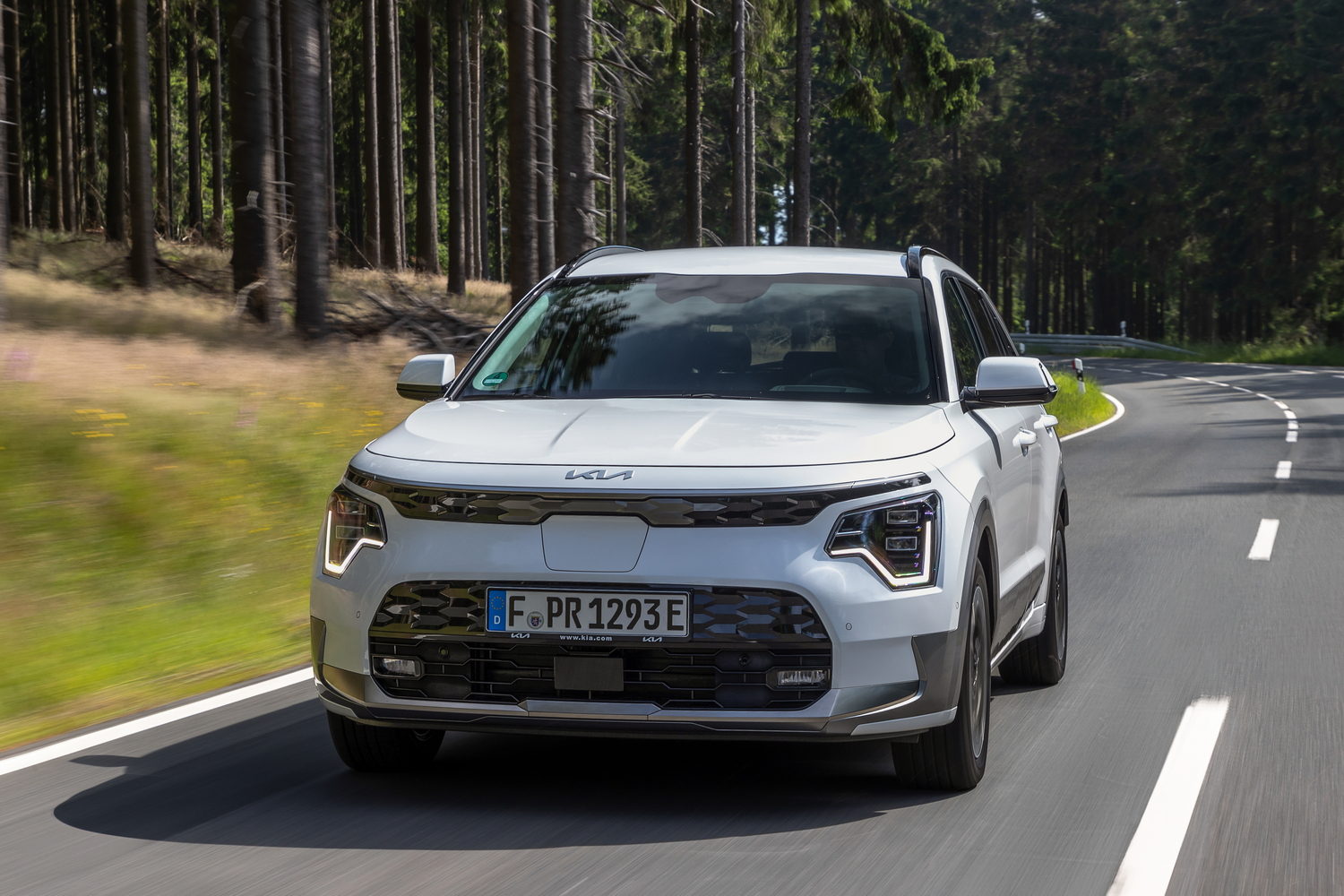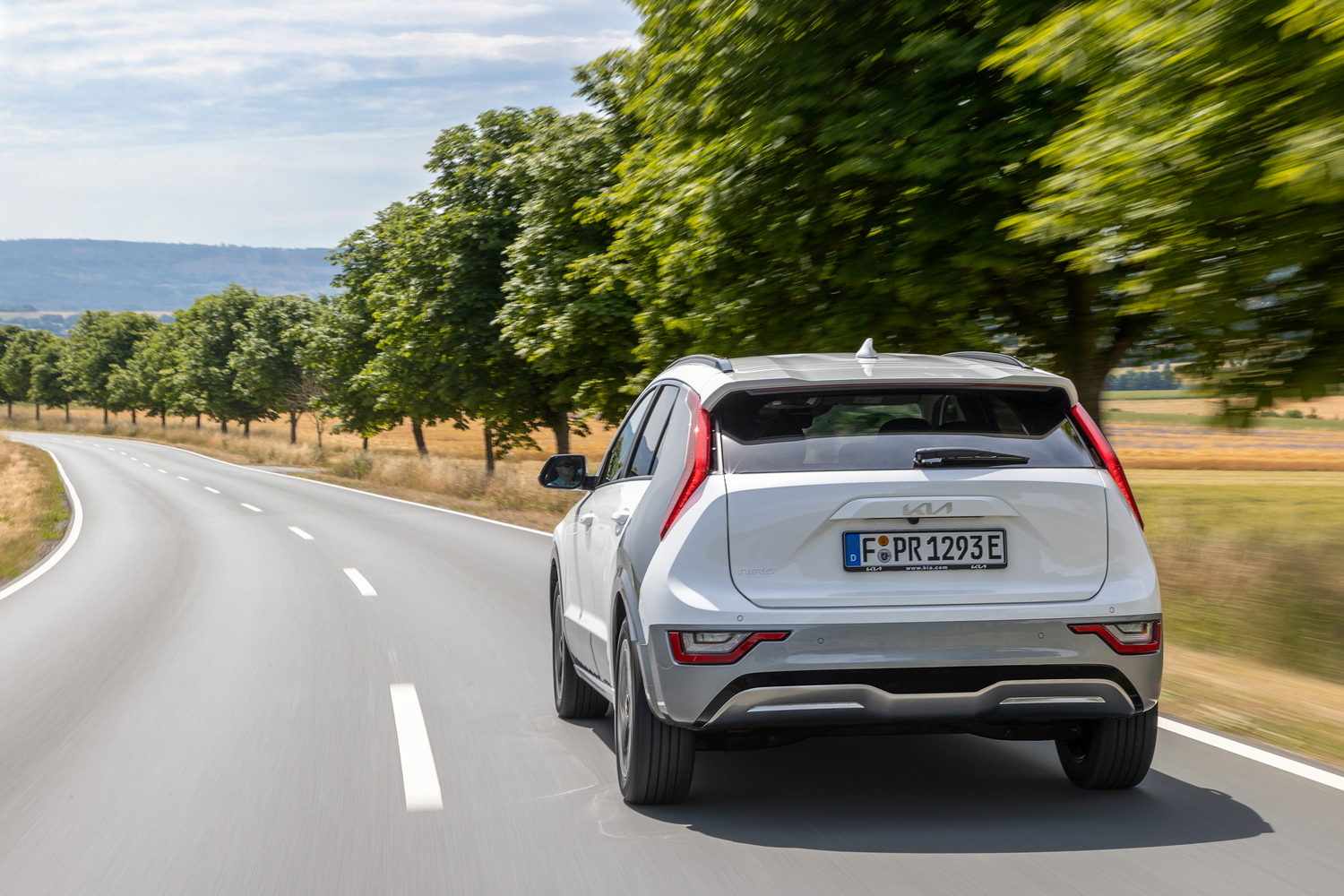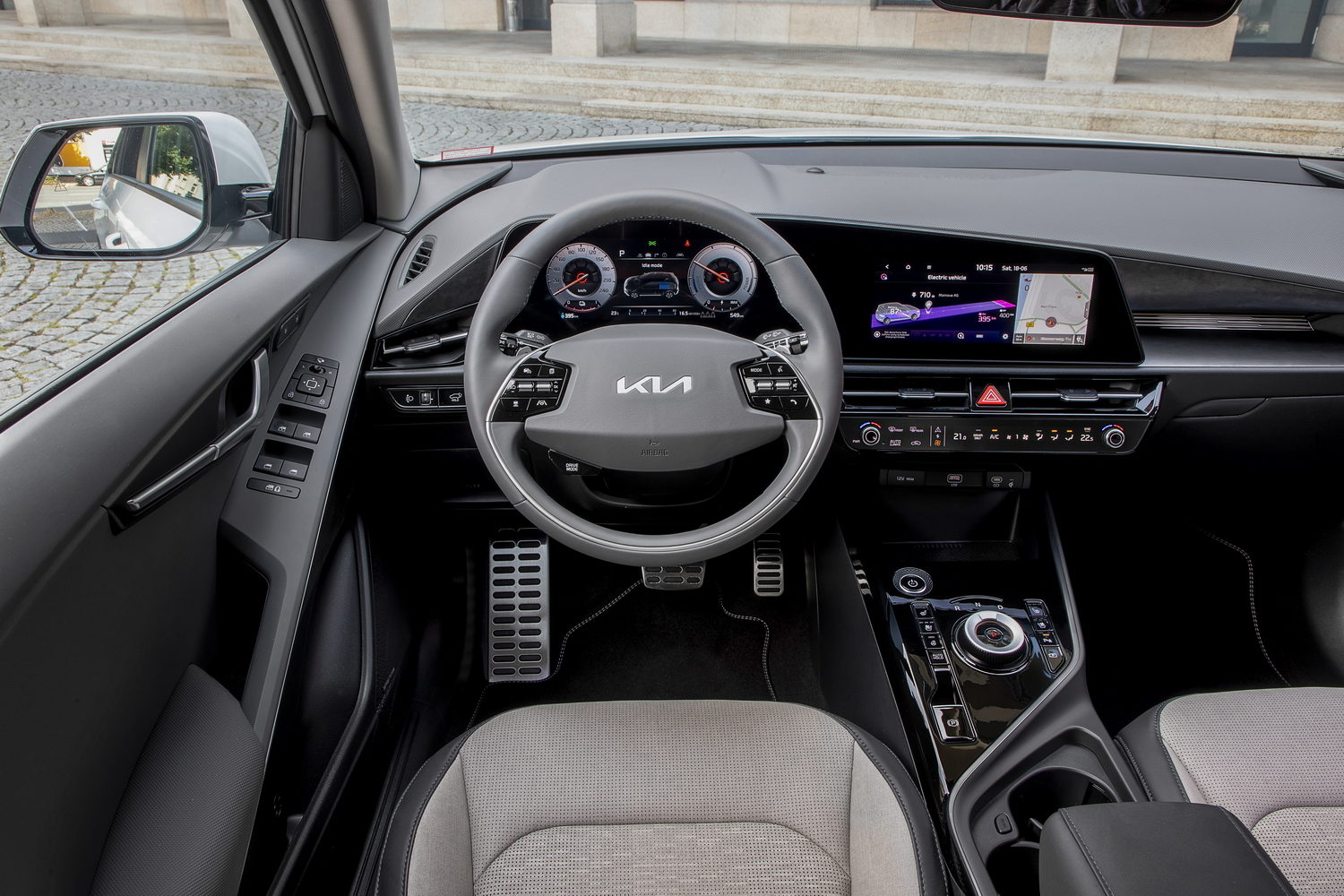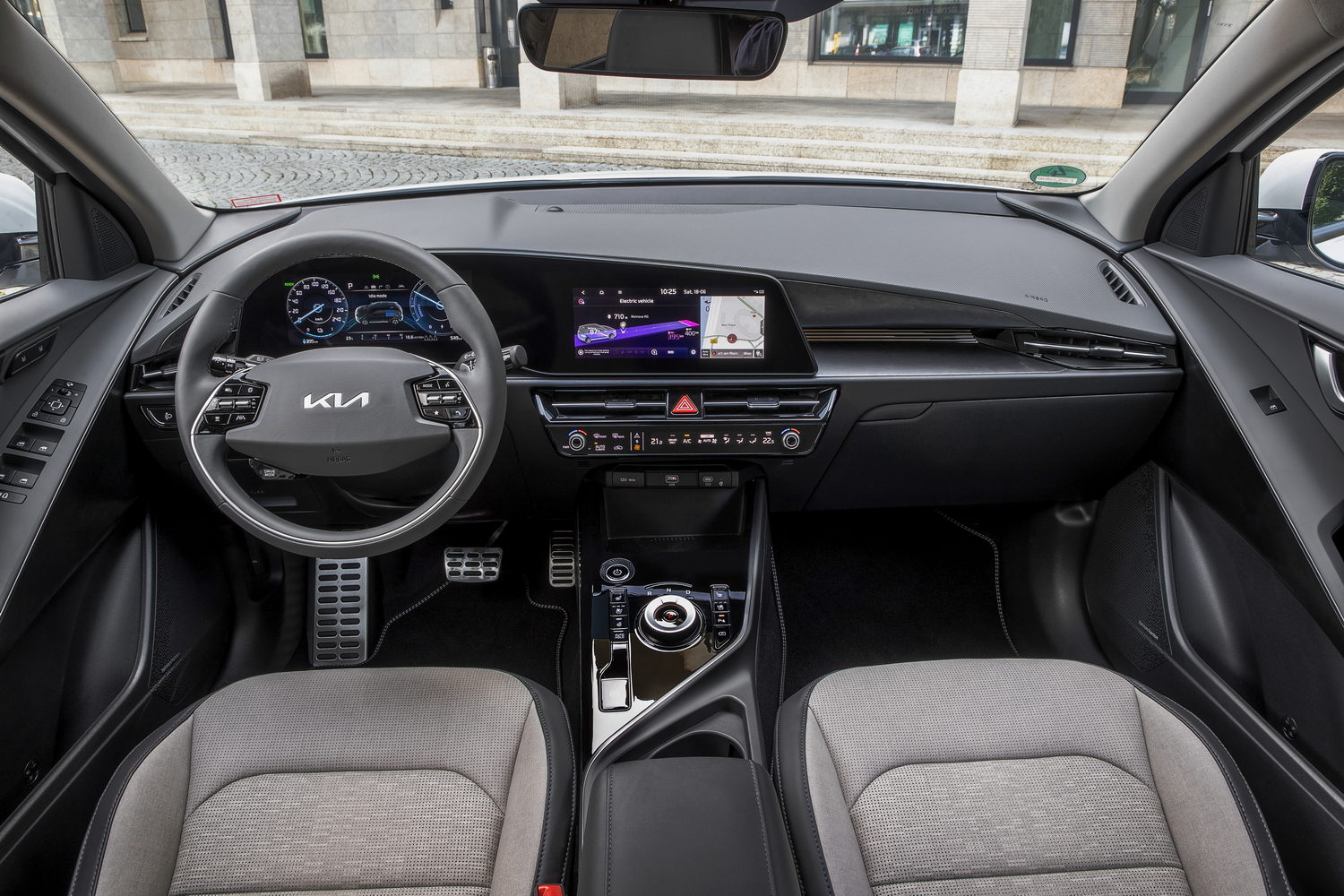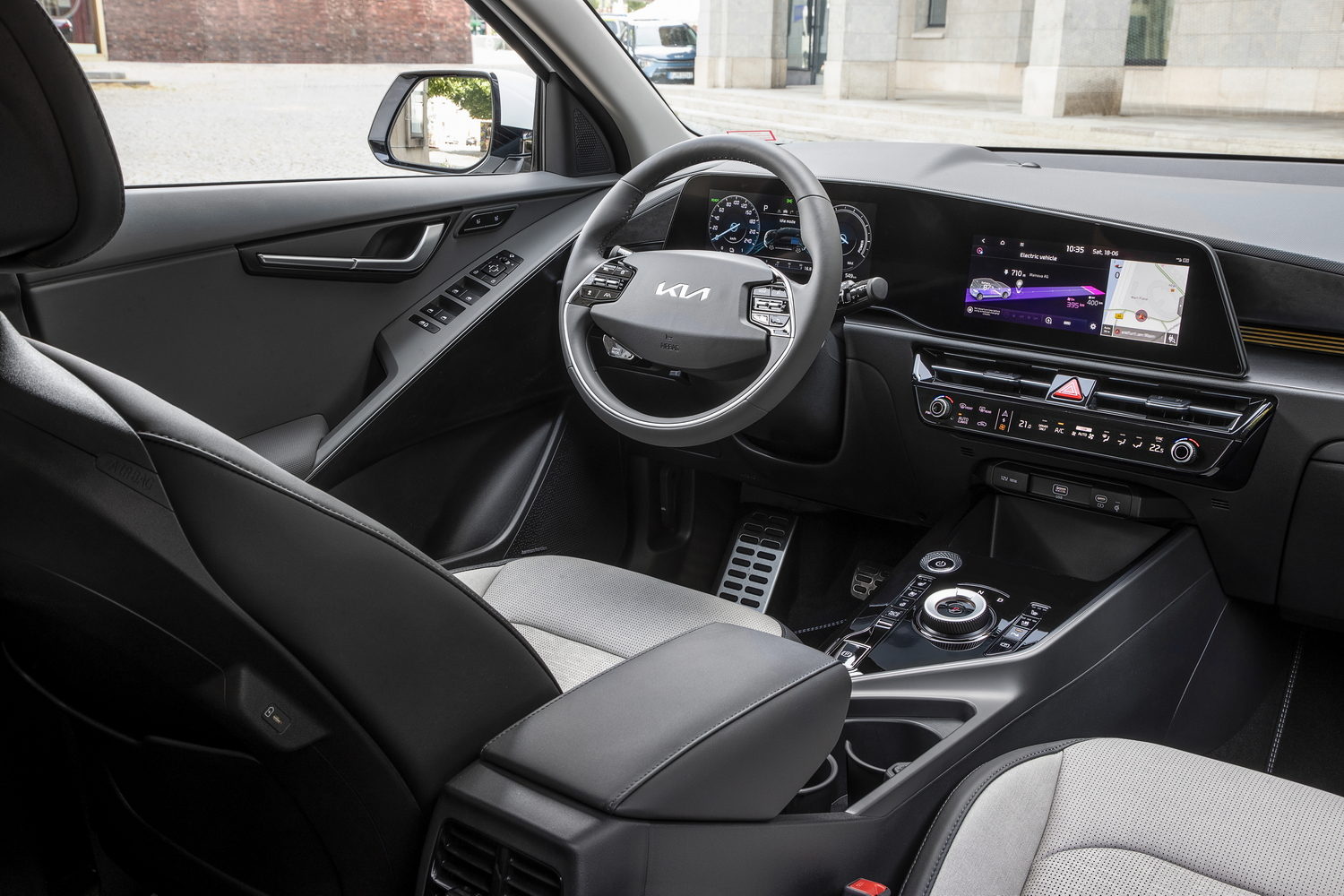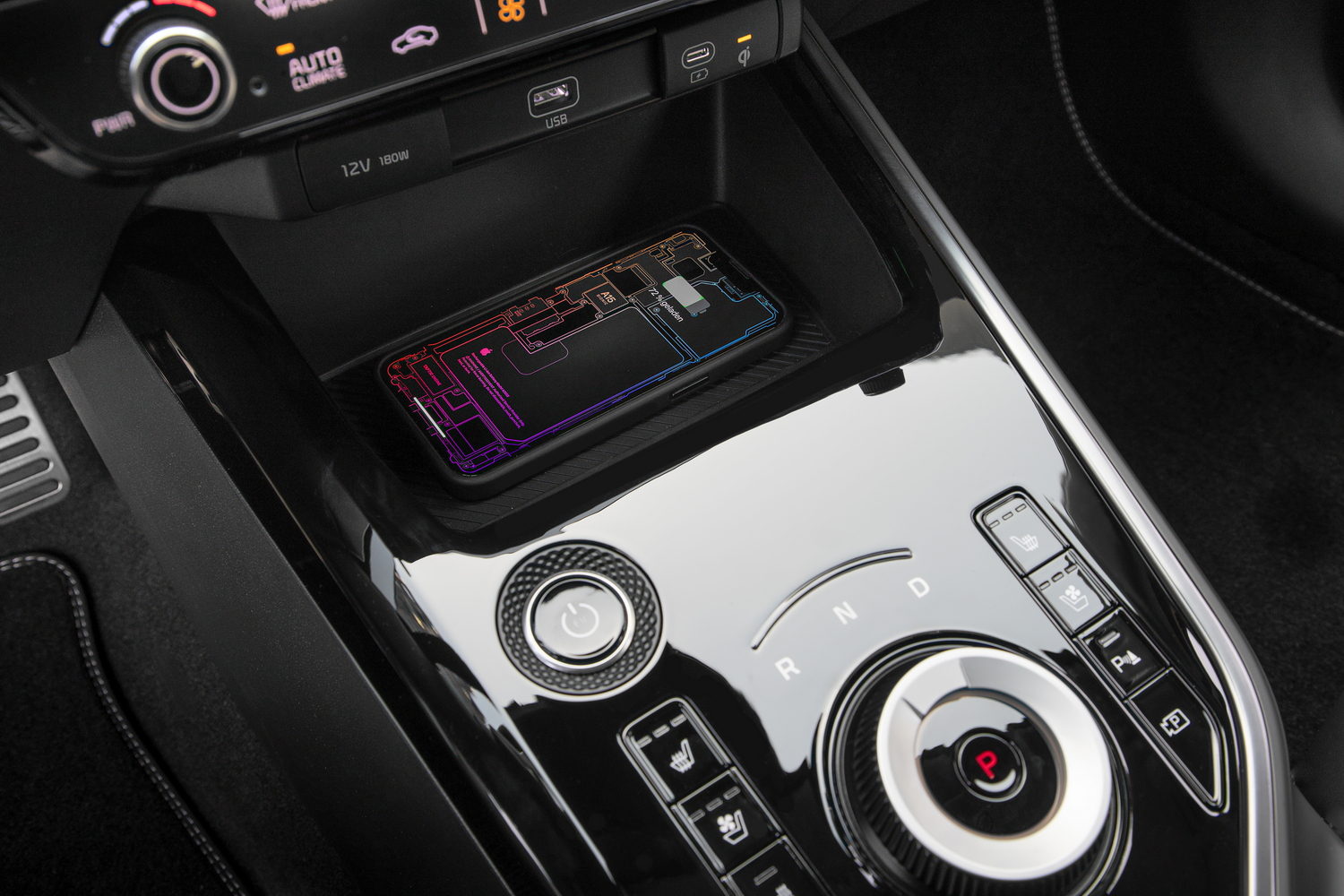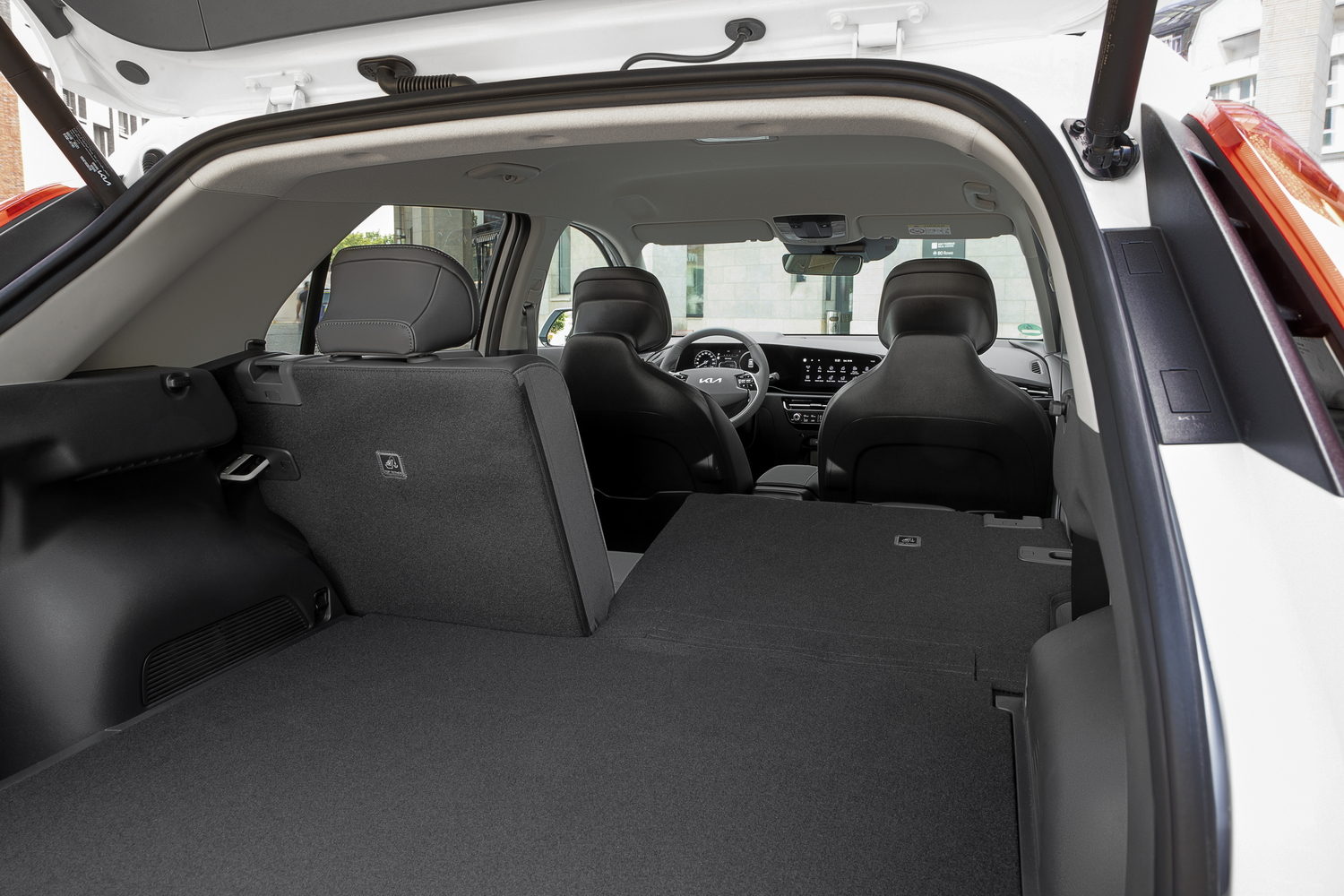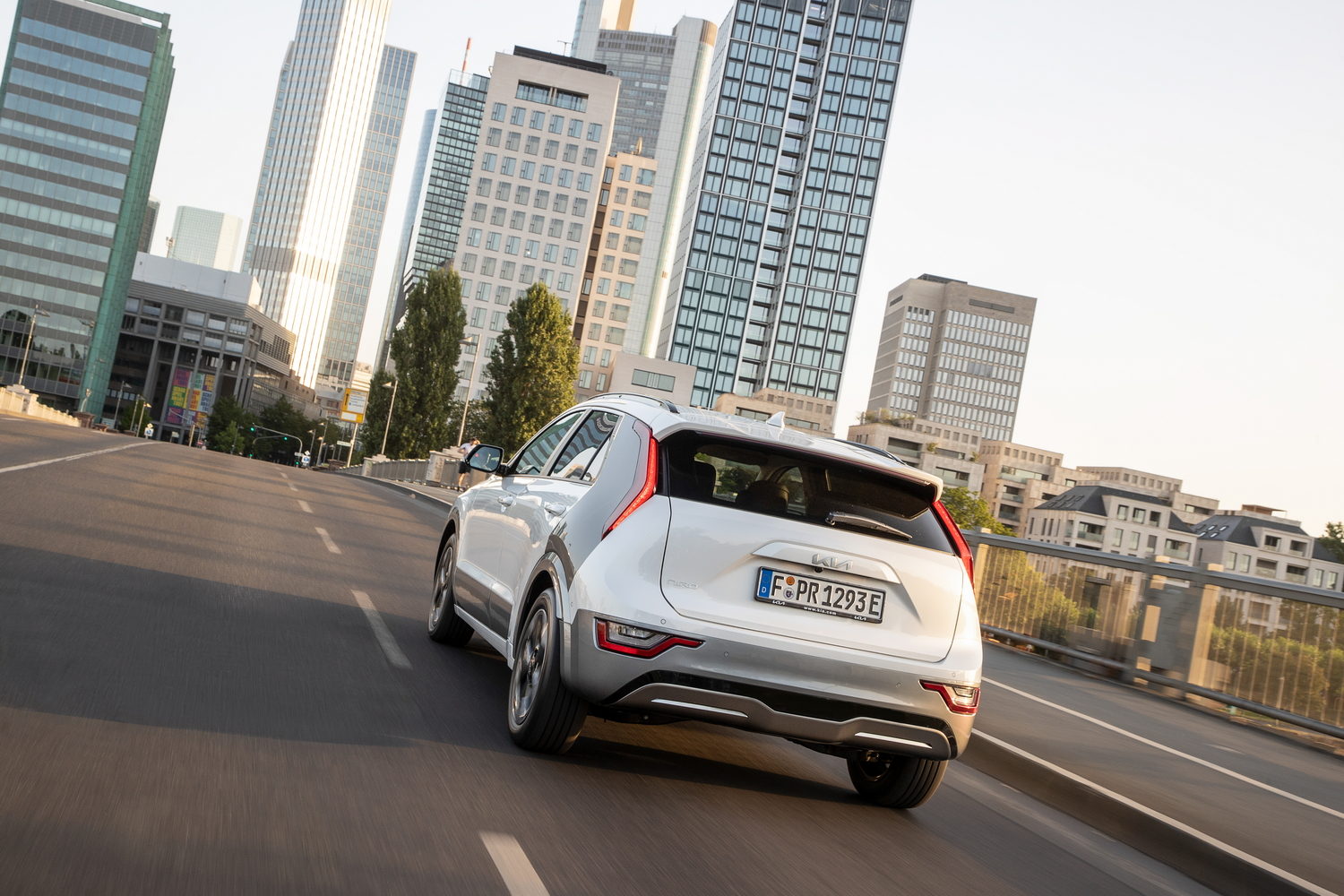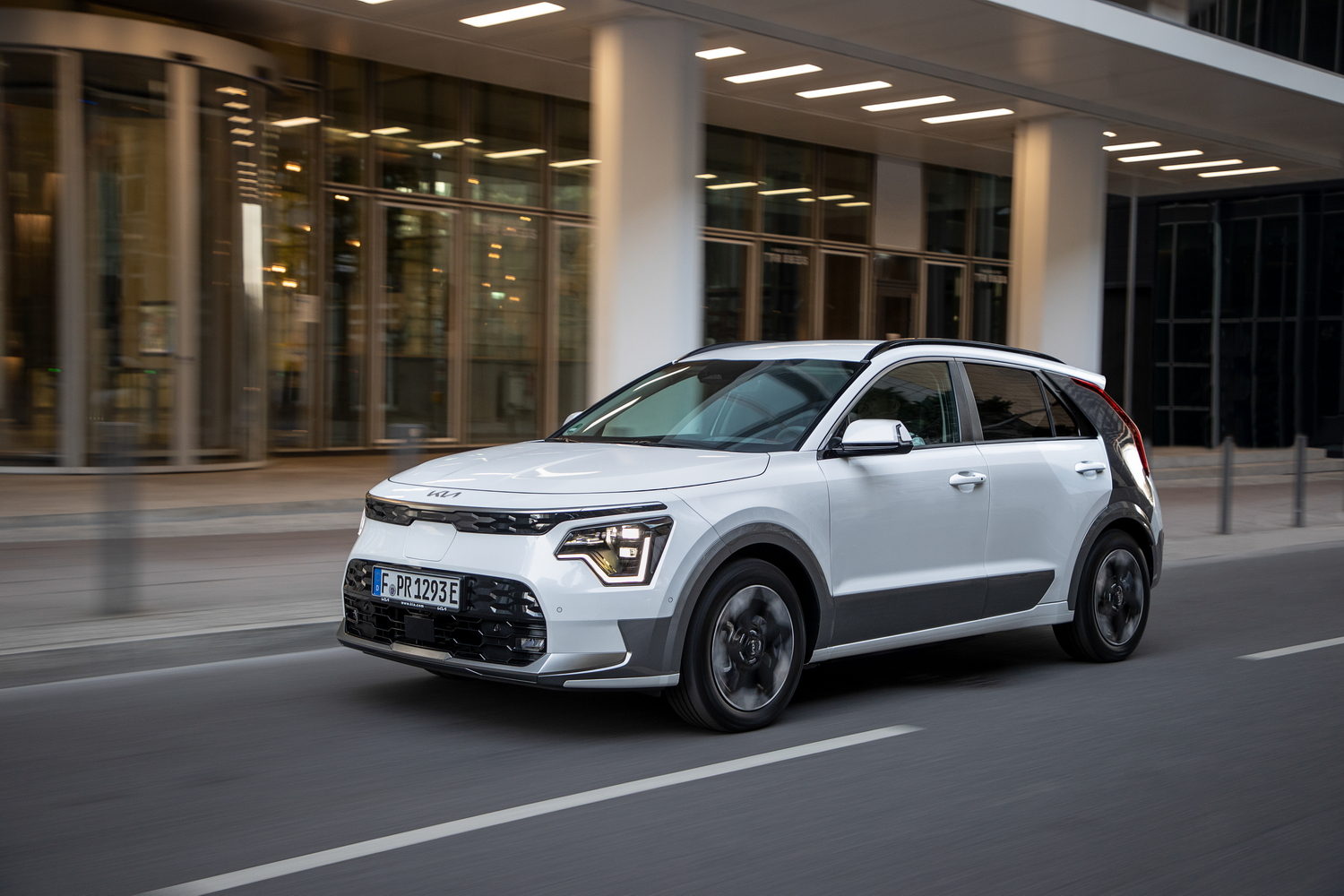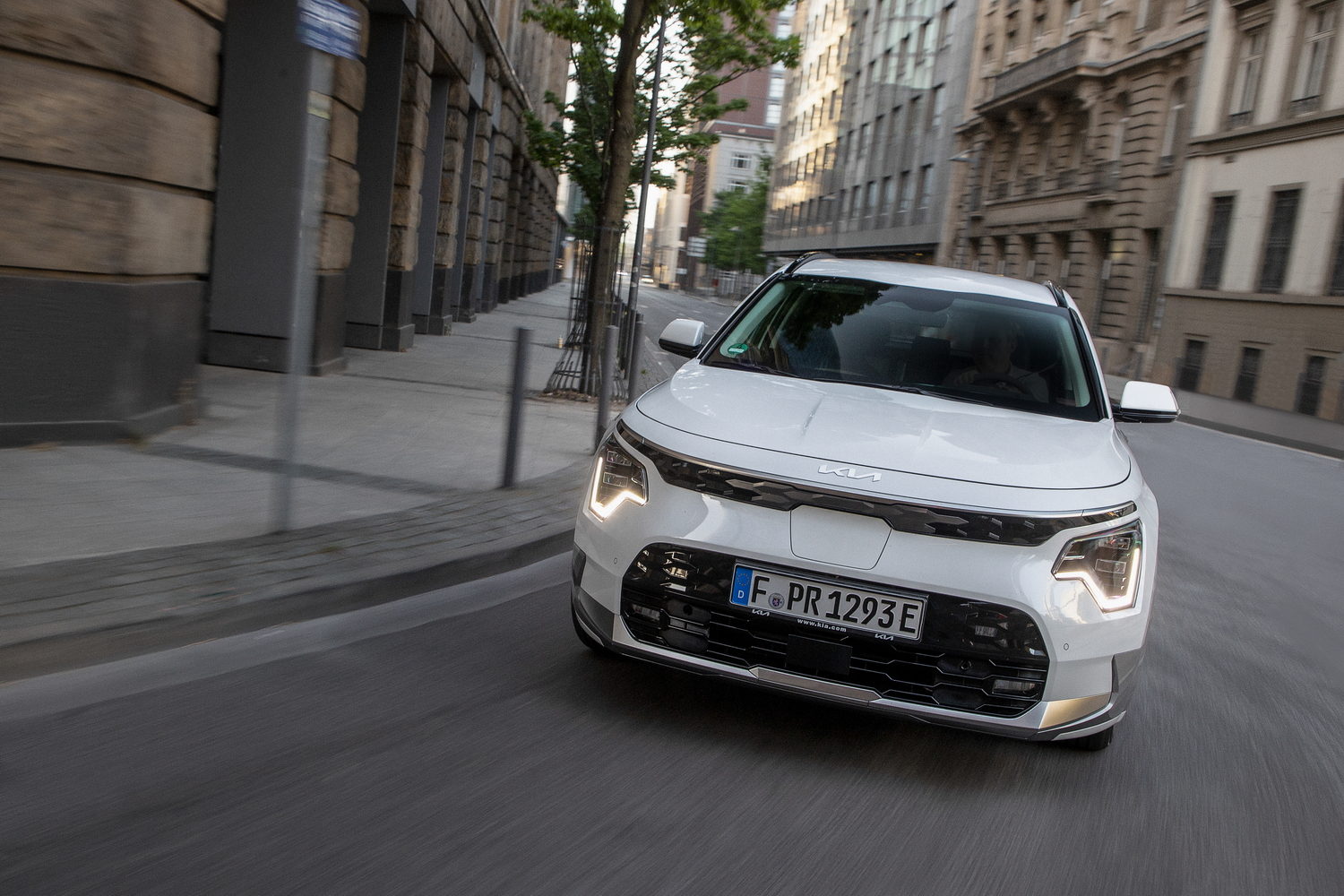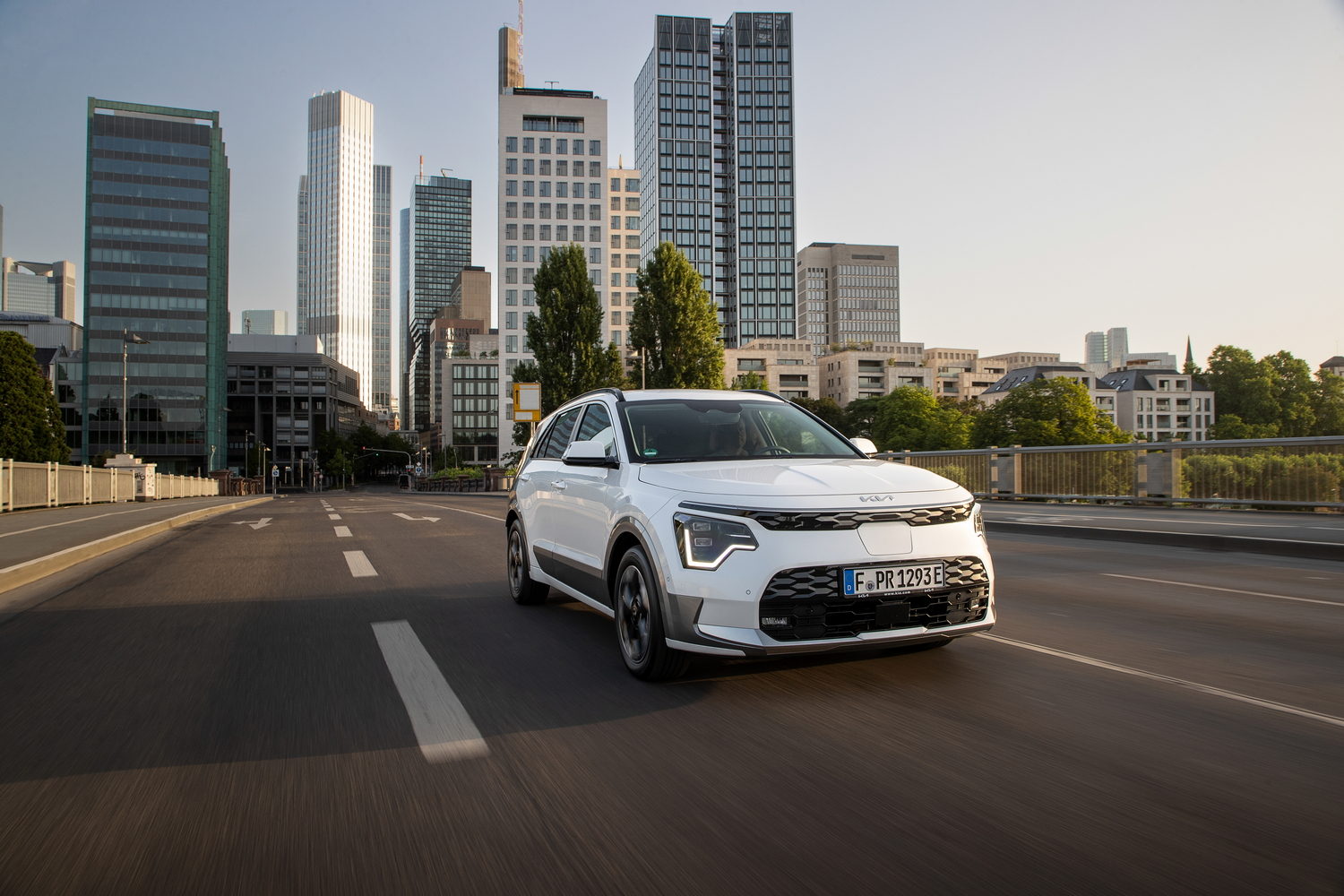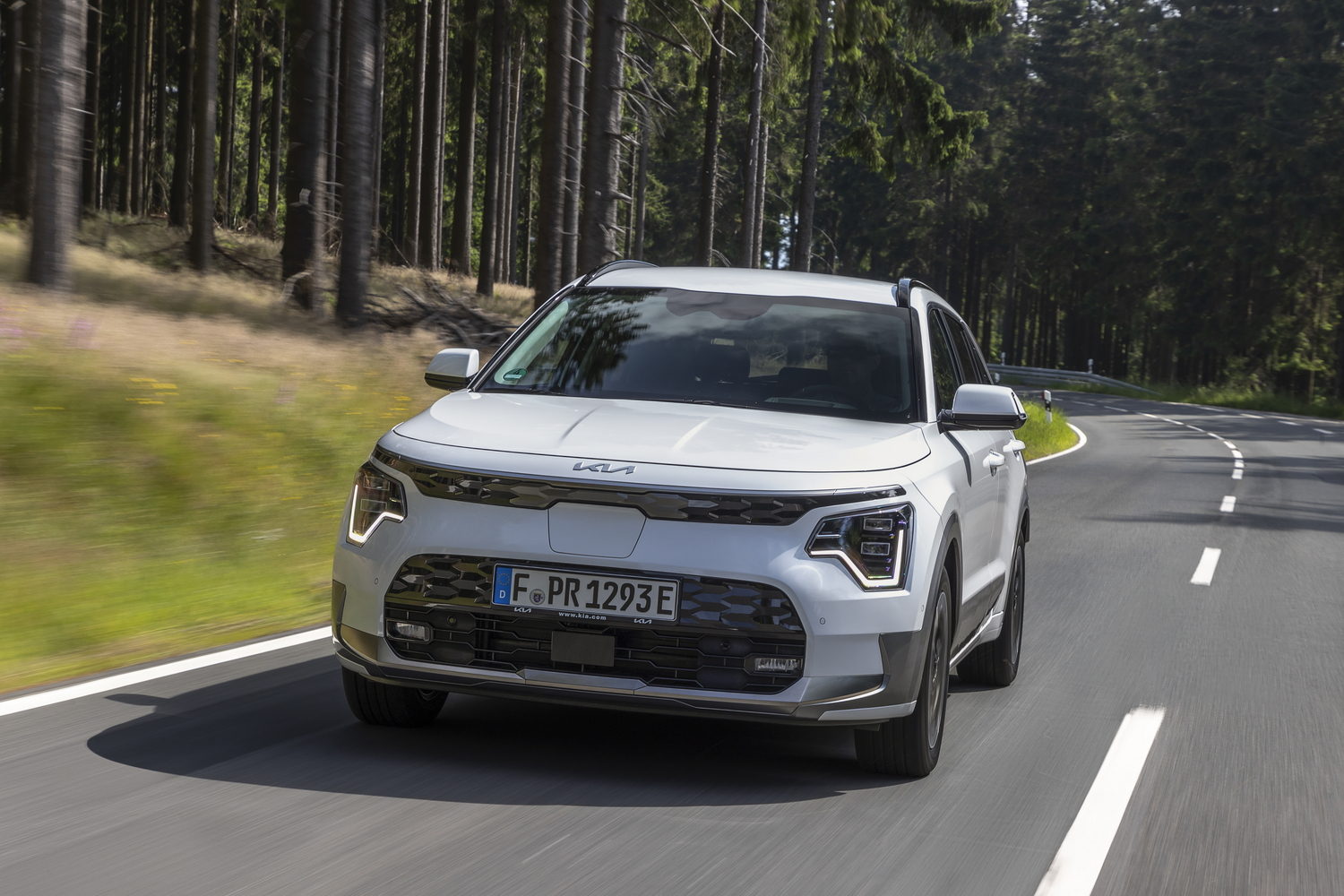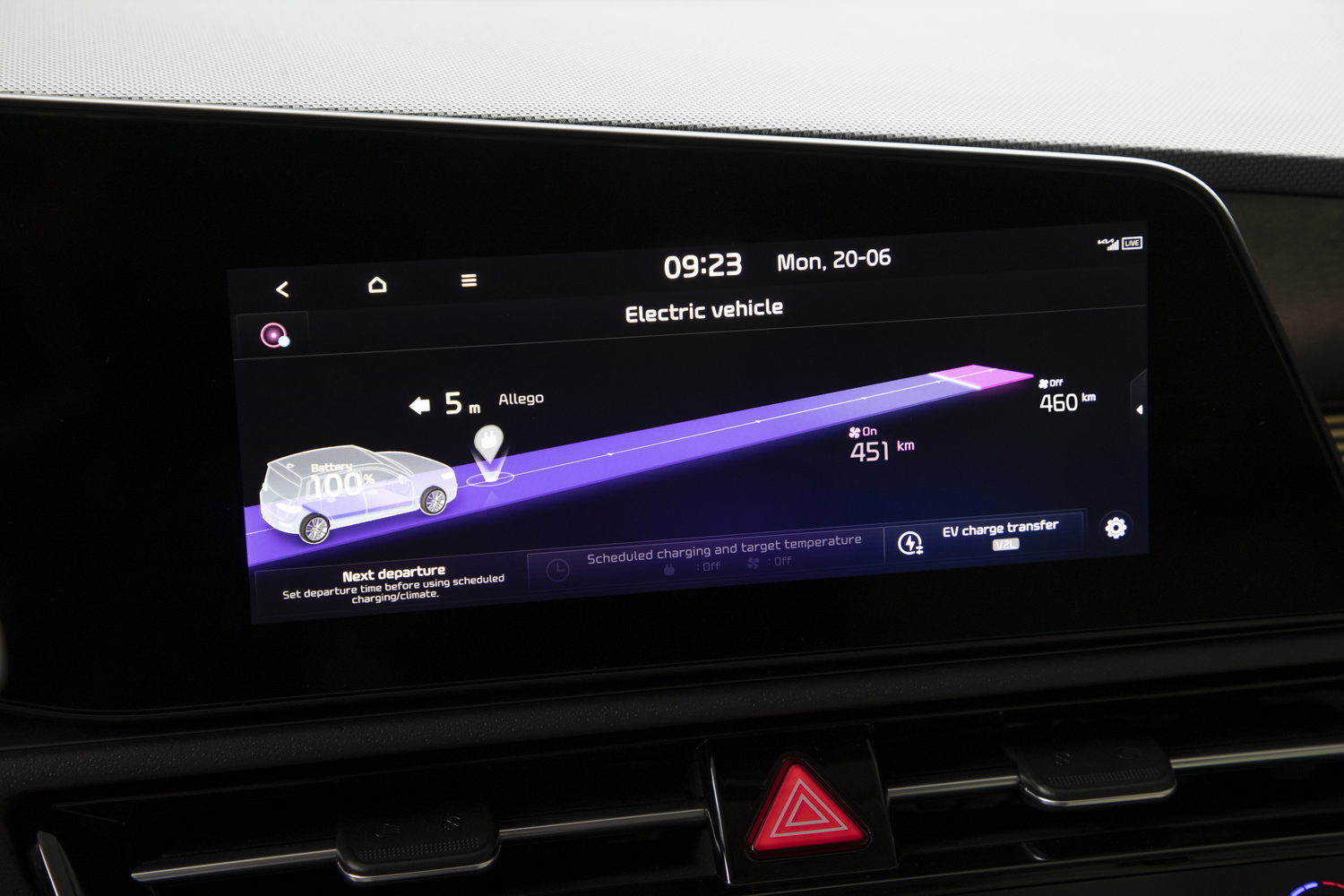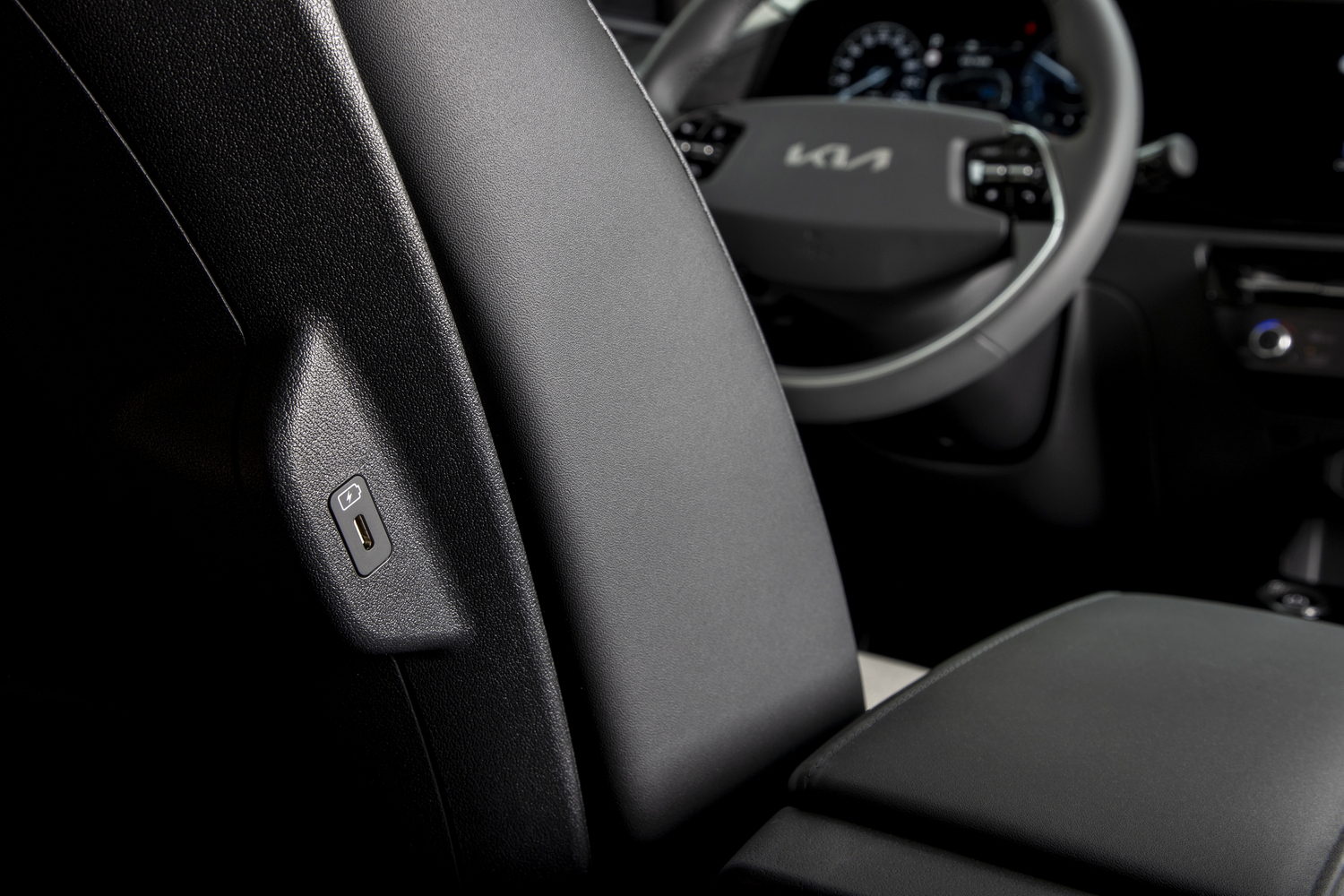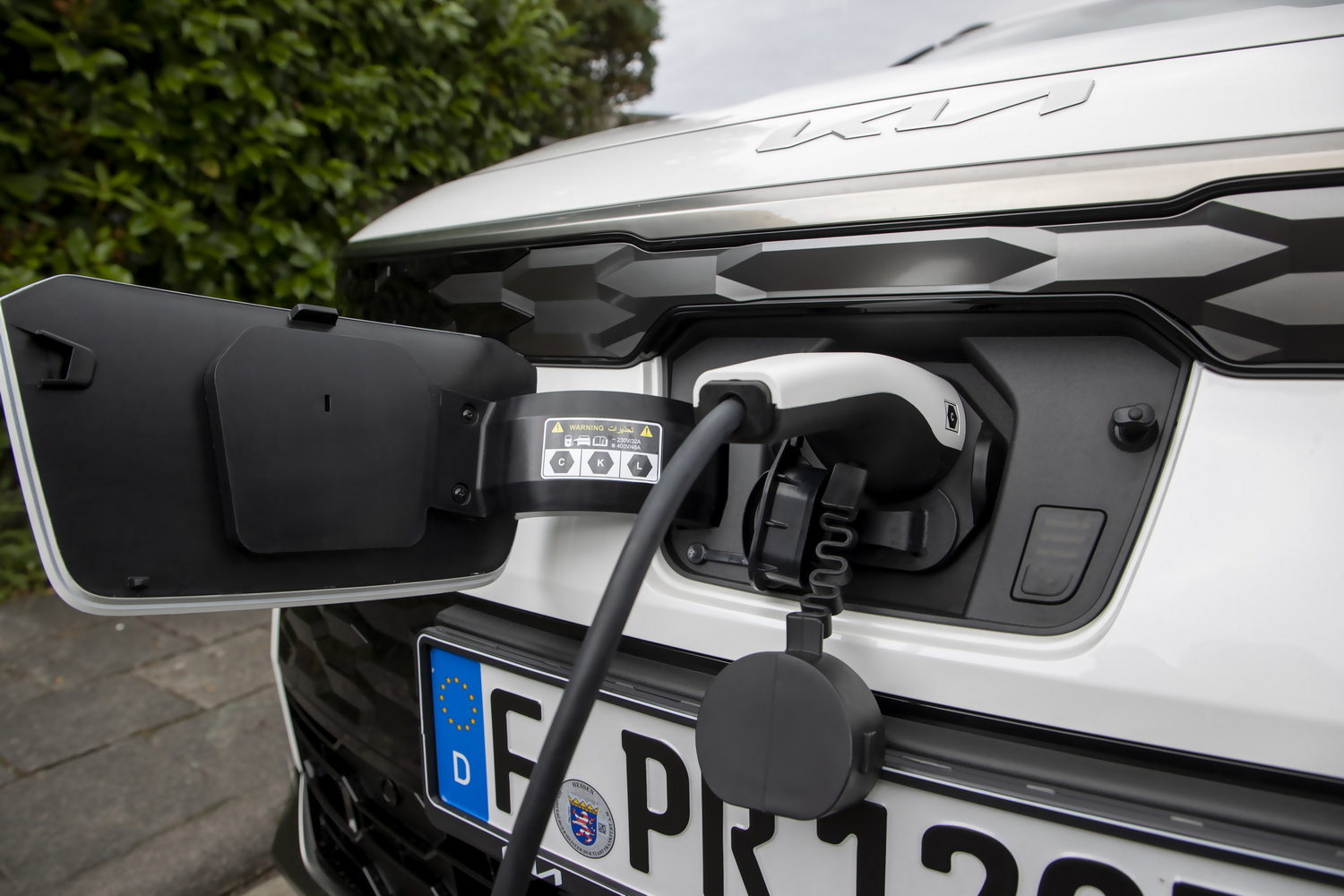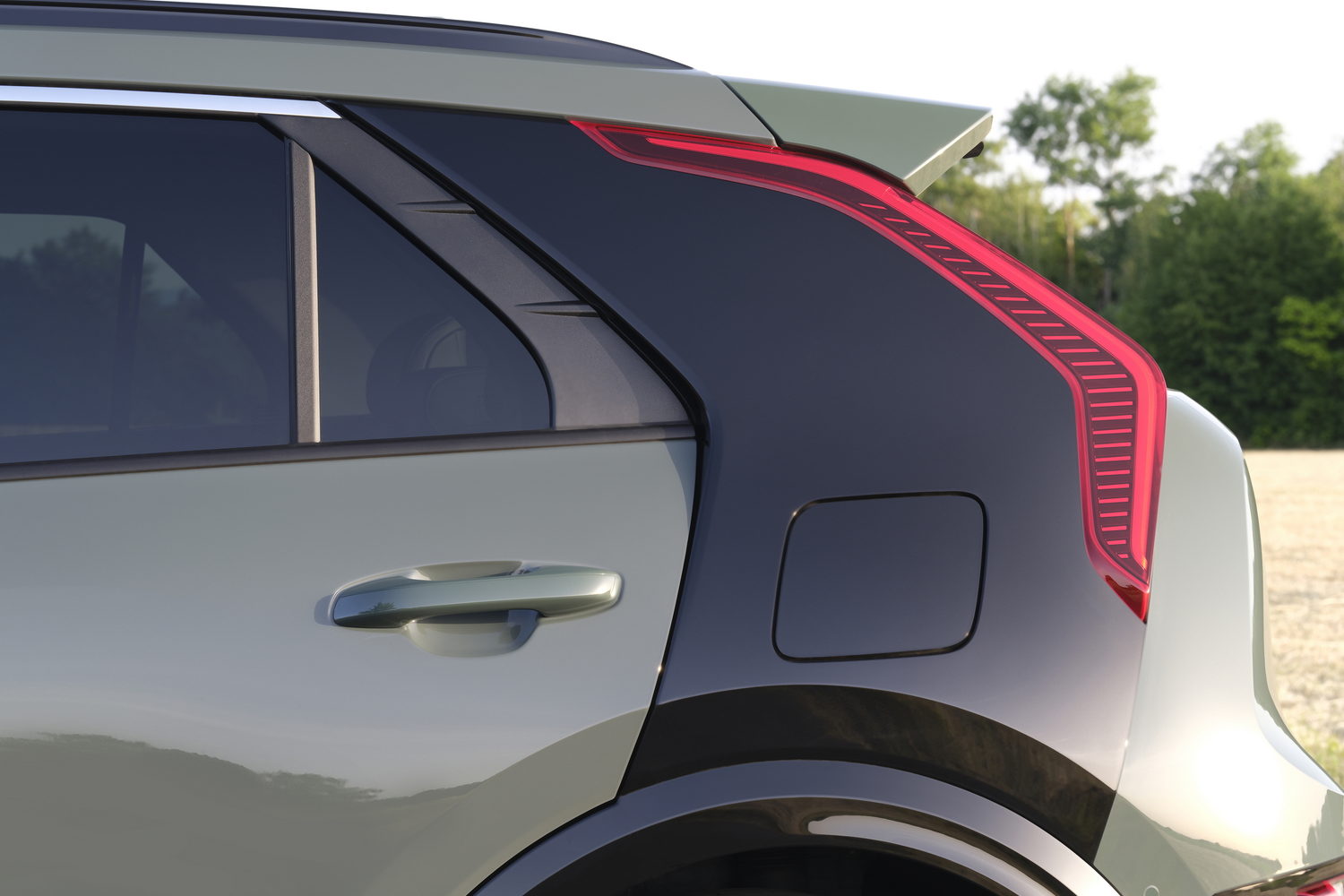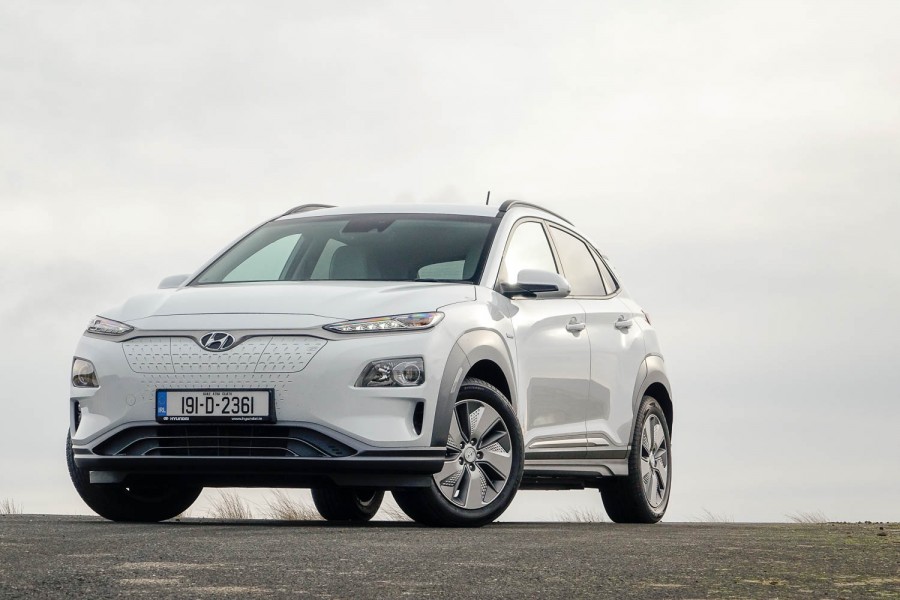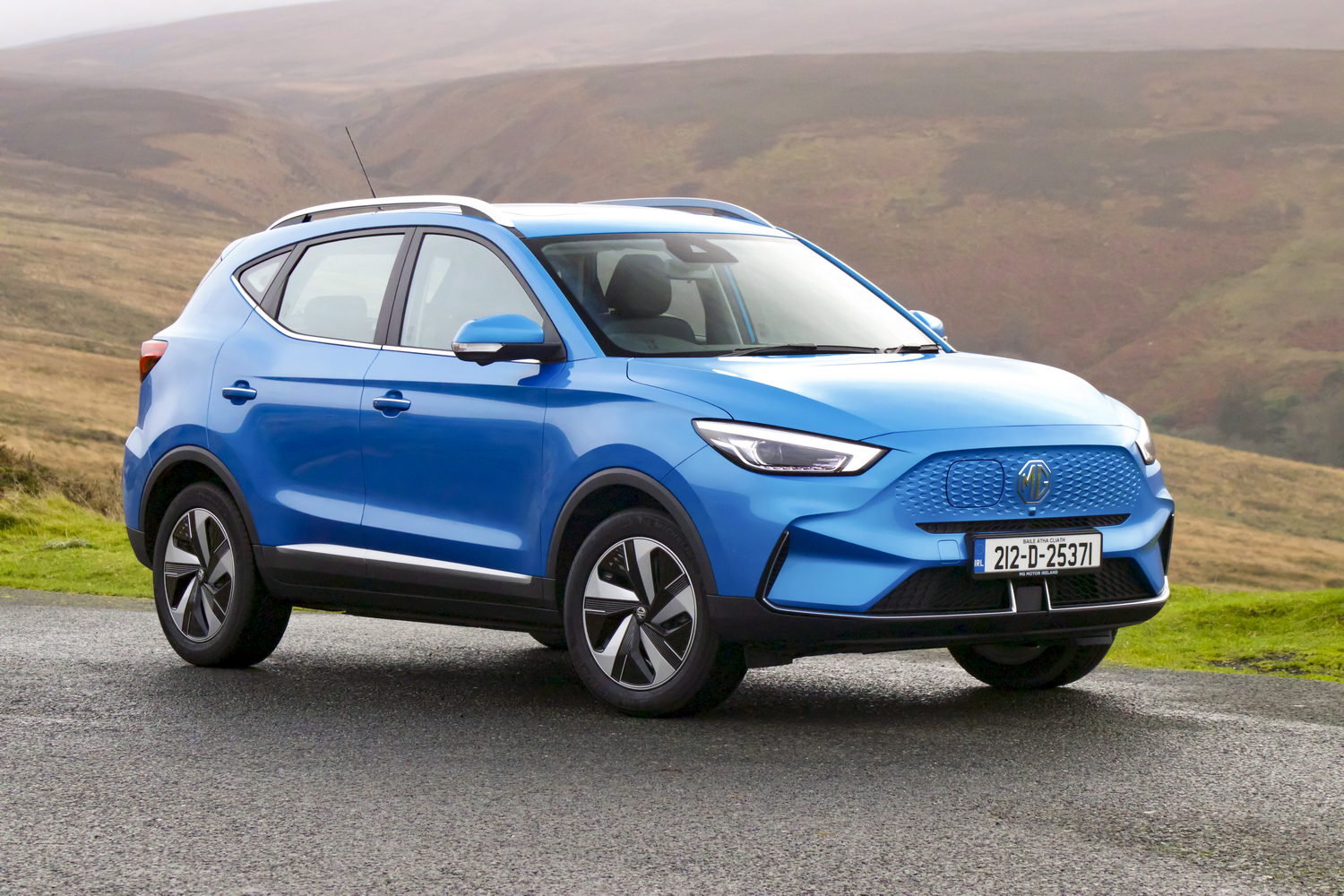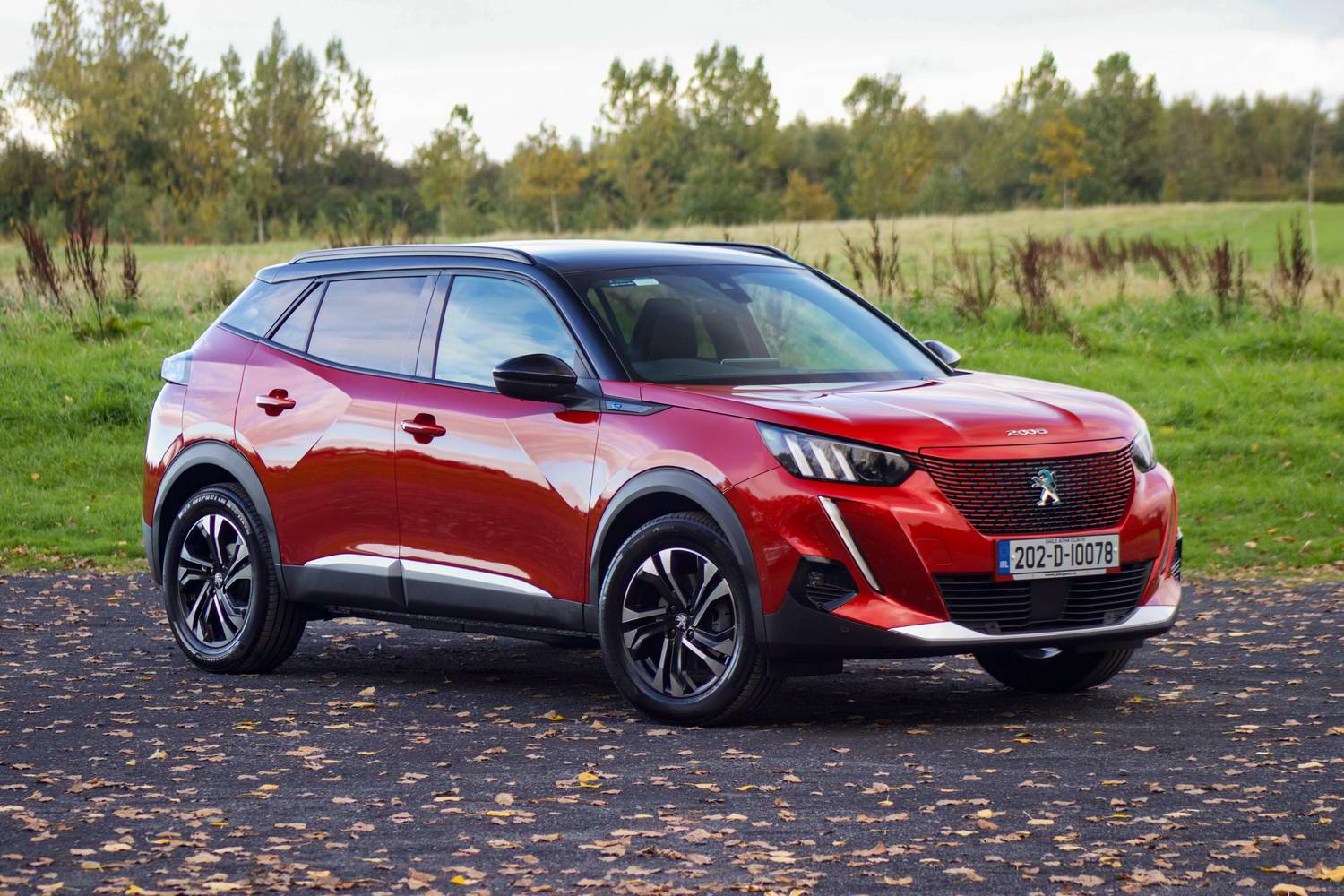The Kia e-Niro arrived in 2016, surrounded by a blizzard of critical acclaim. Merging range, comfort and relative affordability, it went straight to the top of the electric car class, albeit at a time when range was less plentiful than it is today. Nevertheless, the e-Niro was a hit, and it remained a key player in the electric car market throughout its lifespan. But that life is at an end, and the new model - now known as the Niro EV - is here to ensure that the Niro remains among the best electric family cars on the market.
In the metal
Kia has made wholesale changes to the Niro in terms of both design and engineering. The most obvious change is the brave, modern new look, which includes rear panels that can be specified in a contrasting colour. But while that's an eye-catching feature, it's far from the only change. There's a more purposeful front end, too, complete with some Sportage-esque irregularly shaped headlights.
Overall, it looks futuristic and smart, but Kia has made a slight misjudgement with the charging port on the car's nose. The inevitable shut lines mark it out prominently, giving the car the appearance of a little French bulldog with its tongue hanging out. It isn't such an issue with darker paint jobs, which hide the shut lines a little better, but it really shows up on cars with white or silver paint.
Aside from that, it's hard to find many faults - particularly with the Niro EV's interior. Taking inspiration from the Kia EV6, the dashboard is as forward-thinking as the exterior, with big screens and a rotary gear selector. The steering wheel's a bit ugly, but generally the cabin looks great, with a massive central touchscreen and a digital instrument display for the driver.
Tech is becoming a bit of a sore point in the car industry, with formerly dominant brands including Volkswagen dropping the ball when it comes to touchscreens. In an attempt to make them more modern and more replete with gizmos, functionality has all too often become a casualty. But Kia and its sister brands, Hyundai and Genesis, are up there with the best at present, creating stylish displays that work well and look good, if not quite as snazzy as some of the more unreliable systems found elsewhere.
Perhaps the technology in the Niro EV cannot claim to be the best on the market - Volvo's Google-powered system and the BMW screens lead the field - but it's another hit for Kia. The menus are logically arranged, and the screen responds rapidly to input, while the system houses all the gadgets you really need. Including the Android Auto and Apple CarPlay smartphone tech.
But the Niro EV's updates aren't all visible. Kia has built every version of the Niro on the same updated platform, adding stiffness and improving crash protection without sacrificing weight. The battery pack can be found under the floor, where it provides better weight distribution, and although it's no bigger than before, it can be charged more rapidly.
With the battery lurking under the floor, rather than under the boot or back seats as it does in the hybrid models, the Niro EV is the most practical model in the new Niro range. In total, the boot measures 475 litres, making it substantially larger than that of a Hyundai Kona Electric and well ahead of the Peugeot e-2008. In fact, it's almost as spacious as slightly larger SUVs such as the Nissan Qashqai or SEAT Ateca. And the boot needn't be cluttered with charging cables and the like because there's a 20-litre 'frunk' under the bonnet designed to carry such things.
Interior space is also impressive, with bags of rear head- and legroom for even the tallest passengers. And the cabin is practical, too, with plenty of storage and cubby holes. Of course, that's a common theme across the Niro EV range, but it's still a more spacious car than, say, a Kona Electric or an Opel Mokka-e.
Driving it
For all Kia's talk of tweaks and new platforms, the Niro EV has much the same powertrain as the old e-Niro. There's a 204hp electric motor that drives the front wheels through a single-speed gearbox, and it's fed by a 64.8kWh lithium-ion battery - all of which should sound pretty familiar to anyone with an e-Niro. Officially, it has a 460km range, which is 6km better than the old e-Niro, but in the real world, where 350-400km is arguably more realistic in mixed use, that is a negligible improvement.
Those figures suggest the Niro EV is competitive on the range front, without being top of the class. The Hyundai Kona Electric, for example, has 22km more range, but the Peugeot e-2008's range is more than 100km lower. Given there's an effective adjustable regenerative braking system on board, and that range grows to 600km with solely urban use, the Niro's battery should be big enough for most motorists.
It'll be quick enough, too, with a 0-100km/h time of 7.8 seconds giving it a feeling of briskness. It's the fastest Niro in the line-up, and while it doesn't feel especially rapid, it allows you to use all its acceleration at any point. No matter whether you're at the lights or already up to speed on the motorway, the Niro EV just goes. It is, however, quite capable of spinning the front wheels if the road surface isn't dry and you misjudge the accelerator.
And the Niro EV isn't just the fastest Niro out there; it's also the best to drive. The ride is more composed than in the hybrid and plug-in hybrid versions, which tend to thud into potholes a bit, and although the weight of the battery (more than 400kg) does occasionally affect the low-speed ride, the Niro EV is fairly good at soaking up the bumps. It certainly feels more planted than any of its siblings.
That makes it more fun on a back road, too. Not only is the acceleration more plentiful, but the heavy battery and motor sit low in the car, giving it a low centre of gravity and making it lean less in corners. It doesn't turn the Niro into a hot hatchback by any stretch of the imagination, but it is more enjoyable than the hybrid and plug-in hybrid versions, which feel slacker in terms of acceleration and body control.
Of course, it still has some of the same drawbacks as the old e-Niro, including overly light steering and a general lack of feel for what's going on under the wheels, but it's a stable and secure car to drive about in. Refinement is as impressive as you would expect, and it's manoeuvrable, too, although the thick rear door pillars mean visibility isn't as good as it could be. Even so, there's plenty of technology to help out, including a good reversing camera system.
What you get for your money
The Niro EV is currently available in Ireland only in range-topping K4 trim, which gives it a starting price of €45,715. That makes it noticeably more expensive than the top-end Hyundai Kona Electric, but you do get lots of standard equipment. Leather upholstery, 17-inch alloy wheels and a head-up display are all thrown in, along with a powered tailgate and front seats that are both heated and ventilated.
Summary
The electric Niro is arguably the pick of the new range. Smooth, comfortable and spacious, it's the most practical and most refined Kia Niro on sale, and its big battery means there's plenty of range to play with. It might not be the most engaging car to drive, but it's still one of the most complete electric family cars you can buy.

